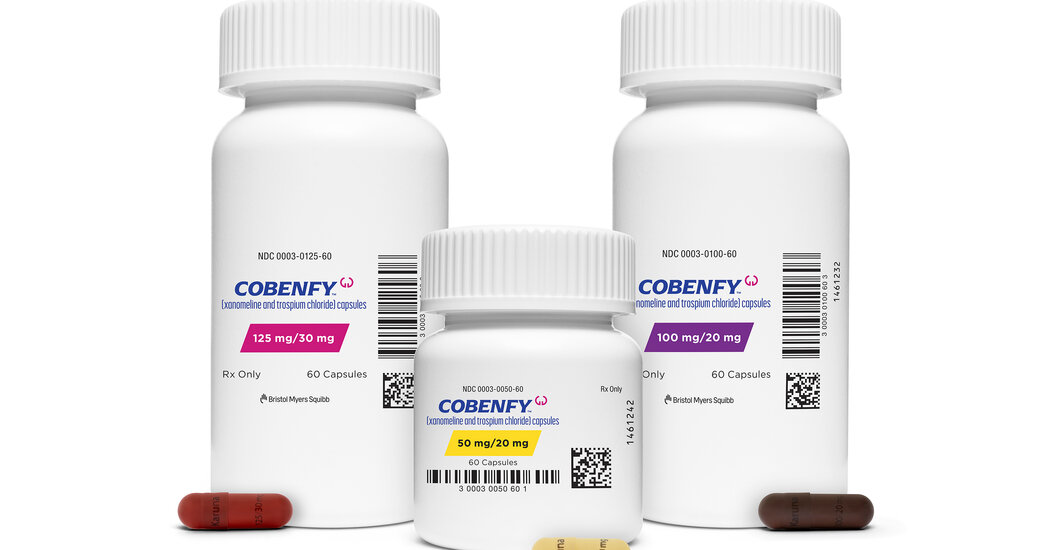Available antipsychotic treatments work by blocking dopamine receptors. The new drug, Cobenfy, takes a different approach.
The Food and Drug Administration on Thursday approved the first novel antipsychotic treatment in decades, a drug developed to treat schizophrenia without disabling side effects like weight gain.
Until now, all available antipsychotics have worked by blocking a dopamine receptor. In most patients with schizophrenia, they can reduce symptoms like hallucinations and paranoia to a manageable level.
But they have serious flaws. Weight gain, a common side effect, contributes to a high rate of cardiac disease and early death among people with schizophrenia. And many patients stop taking the medications, complaining that they leave them sluggish and unmotivated.
The new drug, Cobenfy, also influences dopamine levels, but it does so indirectly, by changing levels of another neurotransmitter, acetylcholine. The new approach, researchers hope, will address some of the most intractable aspects of the disease, like lack of motivation and inability to feel pleasure.
“This is the first time, really since the advent of these medicines, that a new mechanism has come out, so there is really a lot of excitement that maybe we have something new to treat patients with,” said Dr. Frederick C. Nucifora, director of the Adult Schizophrenia Clinic at the Johns Hopkins School of Medicine.
Still, there are unanswered questions about the new drug.
Only three controlled studies of the drug’s efficacy have been published, and all three lasted for only five weeks. So it is not clear how effective Cobenfy will be over longer periods, or whether it has long-term neurological side effects, like movement disorders, said Dr. David Rind, the medical director of the Institute for Clinical and Economic Review, which reviews new drugs arriving on the market.
